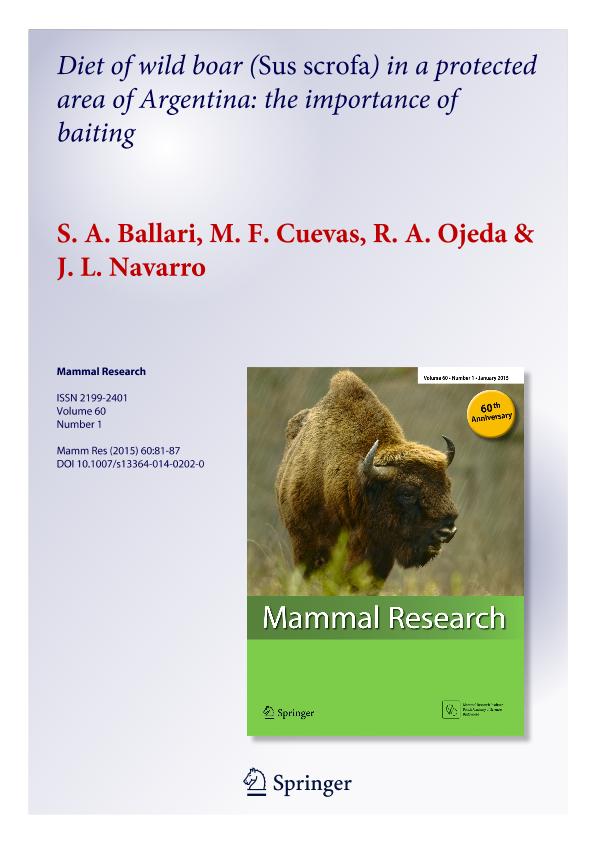Artículo
Diet of wild boar (Sus scrofa) in a protected area of Argentina: the importance of baiting
Fecha de publicación:
10/2014
Editorial:
Springer
Revista:
Mammal Research
ISSN:
2199-2401
e-ISSN:
2199-241X
Idioma:
Inglés
Tipo de recurso:
Artículo publicado
Clasificación temática:
Resumen
The wild boar is an invasive mammal in Argentina that generates habitat alteration, predation and competition that threaten several native species due to its flexible and broad diet and its rooting behavior. We evaluated the diet of wild boar in El Palmar National Park (EPNP), assessing its composition, seasonality and importance of baiting. Vegetable matter represented the major component of the diet, where corn was the most abundant food item, which is used as bait to hunt wild boars). Animal remains were also abundant and mostly consisted of birds. Wild boar diet exhibited marked seasonality that seems related to food availability, such as the occurrence of fruits in summer. Currently, the importance of bait in the diet could be support and complement the diet of wild boar and improve their reproduction triggering the population growth. Also the impacts on native biodiversity may be hidden due to the constant food subsidy of corn. We recommend the implementation of others control methods as hunting with dogs or traps, the use of alternative baits, as odor baits, to avoid the supplemental feeding or finally, if corn baiting continuous, we suggest regulate their quantity and frequency. Further studies on wild boar diet and baiting methods should be conducted due to its multiple implications on wild boar populations and native ecosystems.
Archivos asociados
Licencia
Identificadores
Colecciones
Articulos(IADIZA)
Articulos de INST. ARG DE INVEST. DE LAS ZONAS ARIDAS
Articulos de INST. ARG DE INVEST. DE LAS ZONAS ARIDAS
Citación
Ballari, Sebastián A.; Cuevas, Maria Fernanda; Ojeda, Ricardo Alberto; Navarro, Joaquin Luis; Diet of wild boar (Sus scrofa) in a protected area of Argentina: the importance of baiting; Springer; Mammal Research; 60; 1; 10-2014; 81-87
Compartir
Altmétricas




